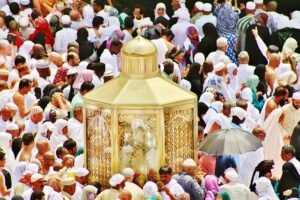Have you ever dreamed of standing atop the ancient Incan city of Machu Picchu, gazing out at mist-shrouded mountains and feeling like you’ve stepped back in time? 🏔️ This UNESCO World Heritage site in Peru is on many travelers’ bucket lists, but best time to go to Peru Machu Picchu it comes to experiencing its true magic.
Imagine arriving at Machu Picchu only to find it packed with tourists, or worse, obscured by heavy rain and fog. 😞 The disappointment of a less-than-ideal visit to this iconic destination can be crushing. But fear not! With the right knowledge, you can plan your trip to coincide with the perfect conditions for breathtaking views and an unforgettable experience. Best location for spring break in the world.
In this guide, we’ll explore the ins and outs of visiting Machu Picchu, from the bustling peak season to the quieter off-peak months. We’ll dive into the best times for specific experiences, reveal the optimal hours for those postcard-perfect vistas, and help you navigate Peru’s diverse weather patterns. So, pack your bags and get ready to uncover the secrets of timing your Machu Picchu adventure just right!

Peak Season for Machu Picchu
Stunning views during dry season (May to September)
The dry season from May to September offers the most breathtaking views of Machu Picchu. During these months, the iconic citadel is bathed in golden sunlight, creating a mesmerizing spectacle against the backdrop of lush green mountains. Visitors can expect:
- Clear visibility of the entire site
- Minimal cloud cover obscuring the ruins
- Vibrant colors perfect for photography
Clear skies and perfect photo opportunities
This period provides unparalleled conditions for capturing the beauty of Machu Picchu:
- Crisp, blue skies frame the ancient stones
- Early morning mist dissipates quickly
- Sunsets cast dramatic shadows across the terraces
| Time of Day | Photography Highlight |
|---|---|
| Sunrise | Golden light on ruins |
| Midday | Clear panoramic views |
| Sunset | Dramatic shadows |
Bustling atmosphere and vibrant energy
The peak season brings a lively ambiance to Machu Picchu:
- Diverse mix of international travelers
- Engaging guided tours available
- Cultural events and local festivities in nearby Cusco
While the site can be crowded, the energy is palpable, with visitors from around the world marveling at the Incan marvel. The dry season’s pleasant weather allows for comfortable exploration of the extensive ruins, making it an ideal time for those seeking to fully immerse themselves in the wonder of Machu Picchu. Best location for vacation home with your families.
Off-Peak Season Benefits
A. Fewer crowds for a more intimate experience
Visiting Machu Picchu during the off-peak season offers a unique opportunity to explore this ancient wonder without the bustling crowds. You’ll have more space to wander, reflect, and truly absorb the mystical atmosphere of the site. This intimate experience allows for:
- Unobstructed views of the ruins
- Better photo opportunities without strangers in the background
- More personal interactions with local guides
B. Lush, green landscapes after rainy season
The off-peak season, typically following the rainy months, rewards visitors with vibrant, lush scenery:
- Verdant hillsides surrounding the citadel
- Misty mountains creating a dreamlike backdrop
- Blooming wildflowers adding splashes of color
| Season | Landscape | Crowd Level | Price Range |
|---|---|---|---|
| Peak | Dry, brown | High | $$$ |
| Off-Peak | Lush, green | Low | $ |
C. Lower prices for accommodations and tours
Traveling during the off-peak season can significantly reduce your trip costs:
- Discounted hotel rates in Cusco and Aguas Calientes
- More affordable tour packages and guide services
- Potential for last-minute deals and upgrades
D. Misty, mysterious ambiance for unique photos
The off-peak season’s weather conditions create a magical atmosphere, perfect for capturing enchanting images:
- Dramatic fog rolling through the ruins
- Sunbeams breaking through clouds, illuminating specific structures
- Rainbows arching over the ancient city after light showers
With these benefits in mind, visiting Machu Picchu during the off-peak season can offer a more rewarding and budget-friendly experience. Next, we’ll explore the best months for specific experiences at this iconic destination.
Best Months for Specific Experiences
June for Inti Raymi festival
The Inti Raymi festival, or “Festival of the Sun,” is a spectacular Incan celebration held annually on June 24th. This vibrant event offers visitors a unique cultural experience alongside their Machu Picchu adventure. Witness colorful processions, traditional music, and elaborate reenactments of ancient Incan rituals.
July and August for warmest temperatures
These months provide the most comfortable daytime temperatures for exploring Machu Picchu. However, be prepared for larger crowds and higher prices during this peak season.
| Month | Average High (°C) | Average Low (°C) | Precipitation (mm) |
|---|---|---|---|
| July | 20 | 2 | 10 |
| August | 20 | 3 | 15 |
April and November for balanced weather and crowds
These shoulder season months offer a perfect compromise:
- Mild temperatures
- Fewer tourists
- Lower prices
- Lush landscapes (April)
- Clear skies (November)
December to March for adventurous hikers
While this is the rainy season, it presents unique opportunities for the intrepid traveler:
- Vibrant, green landscapes
- Fewer crowds on hiking trails
- Lower accommodation costs
- Chance to see Machu Picchu shrouded in mist
Keep in mind that the Inca Trail is closed in February for maintenance. Alternative treks like the Salkantay or Lares routes remain open year-round.
Now that we’ve explored the best months for specific experiences, let’s delve into the optimal times of day to visit Machu Picchu for the most breathtaking views.
Time of Day for Optimal Views
Early morning for sunrise spectacle
For the most awe-inspiring views of Machu Picchu, arrive at the site before dawn. As the first rays of sunlight break over the ancient ruins, you’ll witness a truly magical spectacle. The golden light slowly illuminates the stone structures, creating a breathtaking contrast between light and shadow.
- Best time: 30 minutes before sunrise
- Benefits:
- Fewer crowds
- Cooler temperatures
- Unique photo opportunities
| Season | Approximate Sunrise Time |
|---|---|
| Summer | 5:30 AM – 6:00 AM |
| Winter | 6:00 AM – 6:30 AM |
Late afternoon for golden hour photography
The late afternoon offers another prime opportunity for stunning views and photographs. As the sun begins to set, the warm, golden light bathes the ancient city in a soft glow, creating a mesmerizing atmosphere.
- Ideal time: 1-2 hours before sunset
- Photography tips:
- Use a tripod for stability
- Experiment with wide-angle and telephoto lenses
- Capture long shadows for dramatic effect
Nighttime for stargazing opportunities
While Machu Picchu closes before dark, the surrounding area offers excellent stargazing opportunities. The clear mountain air and minimal light pollution create ideal conditions for observing the night sky.
- Best locations:
- Nearby towns like Aguas Calientes
- Mountain viewpoints with unobstructed views
Now that we’ve explored the best times of day for optimal views, let’s consider how weather can impact your Machu Picchu experience.
Weather Considerations
Temperature variations throughout the year
Machu Picchu experiences two distinct seasons: a dry season and a wet season. The temperature variations throughout the year are relatively mild, but they can still impact your visit.
| Season | Months | Average Temperature |
|---|---|---|
| Dry | May-Oct | 50°F – 70°F (10°C – 21°C) |
| Wet | Nov-Apr | 55°F – 75°F (13°C – 24°C) |
During the dry season, daytime temperatures are pleasant, but nights can be chilly. The wet season sees slightly warmer temperatures but with increased humidity.
Rainfall patterns and their impact on visibility
Rainfall patterns significantly affect visibility at Machu Picchu:
- Dry season (May-October): Less rainfall, clearer skies
- Wet season (November-April): More frequent rain, potential fog
The wet season can present challenges for photography and panoramic views. However, the mist can create a mystical atmosphere, offering unique photo opportunities.
Altitude effects on climate and comfort
Machu Picchu’s high altitude (7,972 feet or 2,430 meters) influences both climate and visitor comfort:
- Thinner air leads to more intense sun exposure
- Temperature drops quickly after sunset
- Possibility of altitude sickness for some visitors
To mitigate altitude effects:
- Stay hydrated
- Acclimatize in Cusco for a few days before visiting
- Wear layers to adjust to temperature changes
- Use sun protection (hat, sunscreen, sunglasses)
Understanding these weather considerations will help you prepare appropriately and maximize your experience at this breathtaking Incan citadel.
Conclusion
Planning your visit to Machu Picchu requires careful consideration of various factors. The peak season from June to August offers ideal weather but comes with larger crowds. For a more serene experience, consider visiting during the shoulder seasons of April-May or September-October. These months provide a balance between favorable weather and fewer tourists.
Ultimately, the best time to visit Machu Picchu depends on your personal preferences and priorities. Whether you’re seeking perfect weather, smaller crowds, or specific experiences like the Inca Trail trek, there’s an ideal time for every traveler. Remember to book your tickets well in advance, arrive early in the morning for the most breathtaking views, and be prepared for changing weather conditions. With proper planning, your journey to this ancient wonder will undoubtedly be a memorable and awe-inspiring experience.



